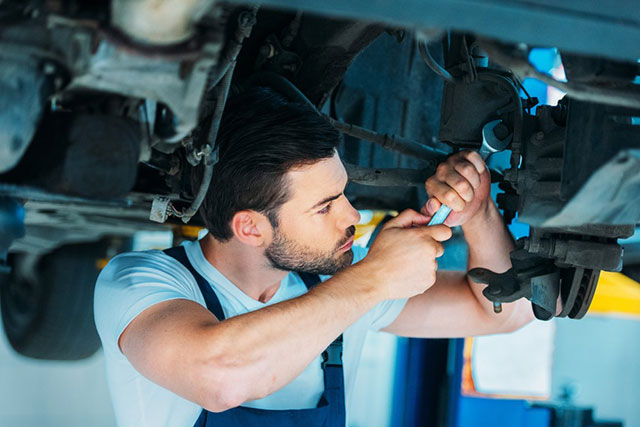Clutches are an integral part of vehicles that use a manual transmission. If you are driving a stick, or a manual car or truck, you’ll want to make sure that you have a high-quality clutch in place. Fortunately, there are several different models and styles of car clutches available today. Whether yours is just a replacement of a damaged part or a performance upgrade, it’s not a difficult process if you just follow the steps.
A Word of Caution
Before we explain the five easy steps to install your new clutch, we feel it important to warn you that while this is a simple job, it’s not for everyone. If you read through the instructions and feel like it’s too much compared to your skills or even if you just don’t want to mess things up, it might be better to leave the work to the experts.
Table of Contents
How To Install A Clutch
Now, here’s what you need to know if you are going to DIY clutch installation.
1. Gather Your Tools and Parts
This isn’t a difficult project, but it takes some tools and supplies that you should have in your garage. Get a jack, a screwdriver and socket set, some lubricant, and the new parts. Once you’ve got everything collected, you can then begin work on your project.
2. Park and Secure the Vehicle
This is an important step. You have to make sure that the car isn’t going to go anywhere while you’re doing work. You can block the tires and use jack stands to help it stay secure. Whatever you do, make sure that the vehicle isn’t going to move while you’re working because that’s the biggest safety risk. Stability is necessary for this job.
3. Get to the Clutch
Now you will need to remove the transaxle and unbolt the engine mount so that you can access the clutch in the first place. Take caution when unhooking the clutch cables and battery cables, as well as any other wires and cables that you disconnect. You’ll also need to remove the prop shaft and the drive axle, as well as the pressure plate, to get the clutch disc out. This will also free up the space for the next step.
4. Clean the Area and Replace the Clutch
Now that you’ve got the old part out of the way, you will be able to clean the crankshaft, flywheel, and other components. If you’re replacing the clutch, you should probably just replace the flywheel at the same time, but that depends on whether it’s also damaged or worn, or if you’re making performance upgrades that require both parts to be new.
Slide the clutch disc into position and use the alignment tool to make sure that it’s in the right spot. Then you can bolt the pressure plate back on and replace the rest of the parts.
5. Reattach the Transaxle and Put Everything Back Together
Now that you’ve got the new clutch installed, you can bolt the engine mount back down and reattach the transaxle so that your car is ready to hit the road. Make sure that you follow the steps carefully and align the transaxle properly. Then, you can tighten the rest of the bolts, release the jack, and hit the road to take it for a test drive.
In Summary
Replacing a clutch isn’t an impossible task, as you can see. Having a clutch that matches the performance of your vehicle can make all the difference. Fortunately, there are several options for aftermarket clutch kits and performance clutches available today to ensure that you get the perfect solution.













